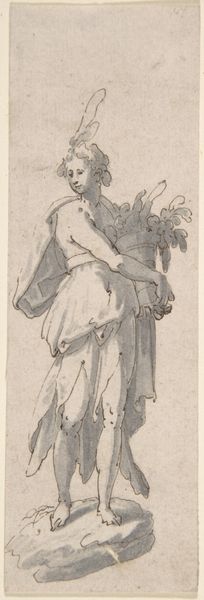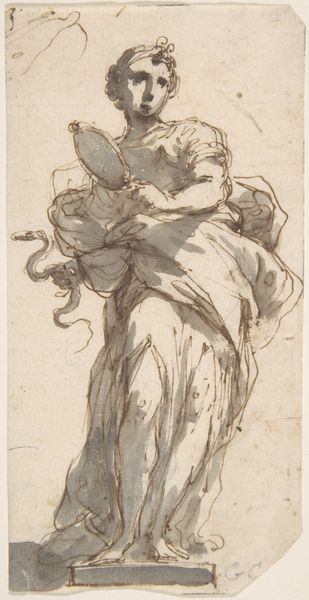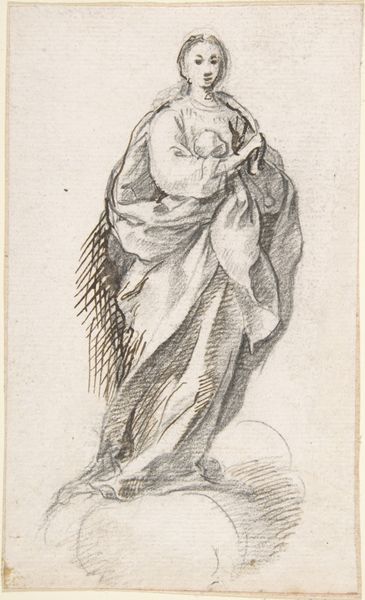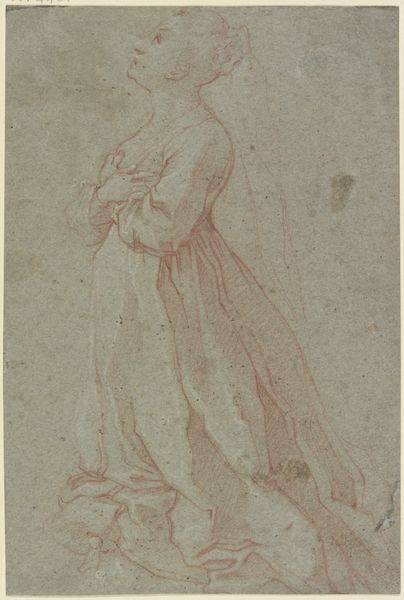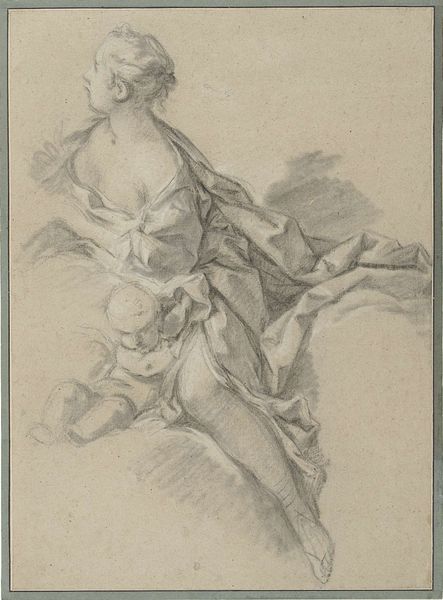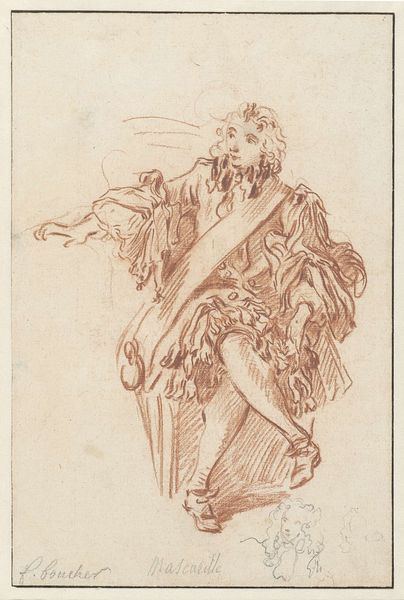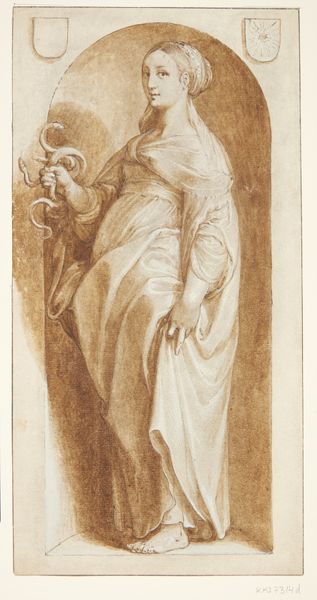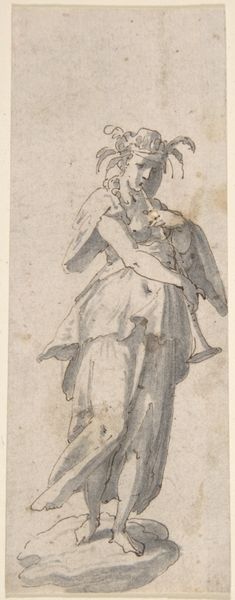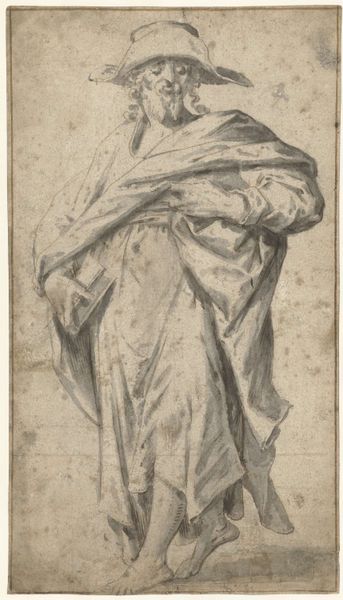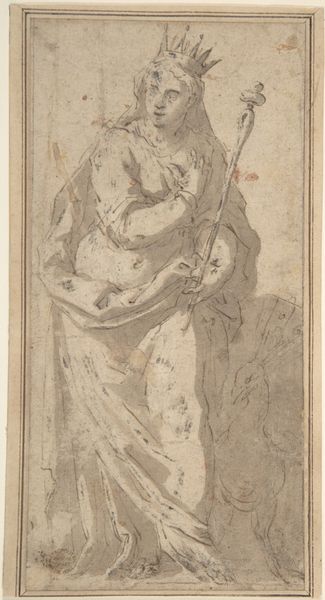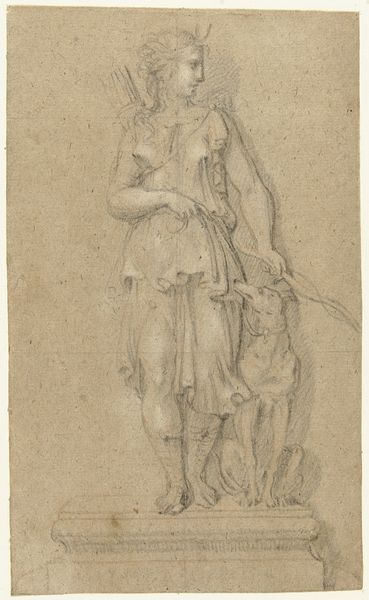
drawing
#
portrait
#
drawing
#
baroque
#
figuration
Dimensions: sheet: 4 3/4 x 1 9/16 in. (12.1 x 3.9 cm)
Copyright: Public Domain
Editor: Here we have "Dancing Woman with Cymbals," an anonymous 17th-century drawing. I find the pose so fluid and dynamic; it almost looks like she is captured mid-air, but also incomplete. What do you notice when you look at this drawing? Curator: Formally, the most striking aspect is the manipulation of line and tone to convey movement. Consider the dynamic contrapposto, the figure's weight shifted to create a sinuous curve. What do you make of the strategic use of hatching and cross-hatching? Editor: I guess it helps define the folds in the drapery and creates volume in a monochrome work? I am curious if that gives an insight into this artist. Curator: Precisely. And note how the artist employs varied densities of line to suggest depth and light. The areas of shadow aren't merely dark; they possess their own intricate linear patterns, don't they? Editor: Now that you mention it, the lighter areas seem much simpler than the more worked passages in darker shades. I initially found that awkward, but the contrast certainly amplifies movement. Curator: This play is critical. Also observe the relationship between the figure and the void. The artist strategically avoids defining the contours, especially where the drapery meets the background. Do you feel a tension there? Editor: I do see it. This creates an ambiguity. Rather than existing *in* space, she feels suspended *by* it. So, this enhances a sense of implied motion and, perhaps, of music itself. Curator: It might be worth noticing how such a sketch has become, due to both survival and display, something like a complete artwork. Editor: This approach gave me new avenues for understanding, such as the intentional composition created by strategic omissions in this beautiful drawing!
Comments
No comments
Be the first to comment and join the conversation on the ultimate creative platform.
